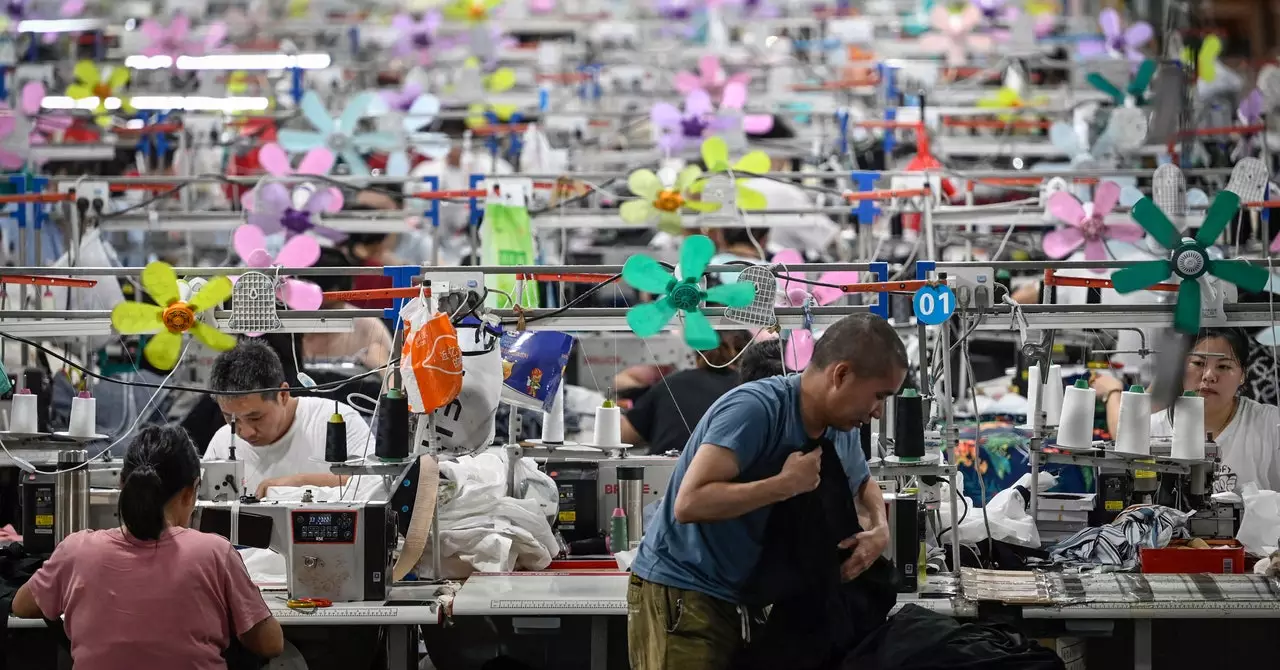In recent years, Shein has emerged as a powerhouse in the fast-fashion industry, reshaping global retail dynamics with its rapid production cycles. Founded just over a decade ago, Shein has made a staggering impact, reportedly generating over $30 billion in revenue in 2023 alone. Operating in a digital-first environment, the brand has capitalized on the accessibility of online shopping, appealing particularly to younger audiences with average item prices hovering around $10. This model has proven irresistible, especially to Gen Z consumers in the United States, where approximately 44 percent reportedly make monthly purchases from the brand.
Achieving this level of omnipresence involves a well-orchestrated logistics network. Every day, Shein adds thousands of new products to its inventory, a feat only made possible through the integration of advanced technology. The company employs machine learning algorithms to analyze customer preferences, enabling it to predict trends and demand in real time. Such innovations allow the brand to launch new designs in a matter of days, effectively shrinking the fashion cycle and feeding an insatiable consumer appetite for novelty.
With the incorporation of artificial intelligence into its business model, Shein exemplifies a broader trend within the fast-fashion sector. Utilizing proprietary machine-learning processes, the company can identify patterns and consumer behavior, allowing it to create products that resonate with its audience before trends have even fully developed. While this operational speed may be appealing from a business perspective, it also raises significant environmental concerns.
AI’s role in enhancing operational efficiency may simultaneously exacerbate sustainability issues associated with the fast-fashion model. Critics argue that the relentless output of cheap clothing leads to detrimental ecological impacts, as the industry is notorious for its carbon emissions, waste generation, and labor exploitation. Shein has pledged to reduce its carbon footprint by 25 percent by 2030 and ultimately achieve net-zero emissions by 2050. Yet, the internal inconsistencies in its sustainability pledges are stark; recent reports indicate that the company doubled its carbon emissions year-on-year, posing questions about the genuineness and feasibility of its commitments.
In stark contrast to its promises, Shein’s operational practices reveal an alarming environmental degradation profile. According to its own sustainability report, the company emitted a staggering 16.7 million metric tons of carbon dioxide in 2023, equating to emissions that outweigh those produced by four coal power plants annually. These figures highlight a troubling disparity between the public relations narrative of sustainability and the underlying reality of fast-fashion operations; these processes are inherently resource-intensive and pollutant-heavy.
Moreover, the rapid turnover of clothing inevitably leads to immense textile waste. The habits encouraged by brands like Shein foster a culture of disposability, where garments are often seen as temporary items rather than lasting investments. This cycle not only fills landfills but also contributes to the burgeoning microplastic pollution crisis, as many of these low-cost items are made from synthetic materials that break down into harmful particles.
Beyond environmental concerns, Shein also faces criticism regarding labor practices and worker exploitation. The race to produce ultra-cheap clothing often relies on low-wage labor sourced from factories with questionable working conditions. This ethical dilemma highlights the complexity of Shein’s rise to prominence; the very model that has brought the company success also implicates it in broader social injustices.
The juxtaposition of Shein’s rapid growth against the backdrop of its financial achievements and environmental ramifications exposes the critical dilemma at the heart of fast fashion. The brand not only renders itself a significant player within the global retail landscape but also exemplifies the urgent call for more sustainable consumption practices.
As Shein continues to navigate the tumultuous waters of public scrutiny surrounding sustainability and ethical responsibility, the potential for transformative change rests squarely on its shoulders. The reliance on AI and rapid production innovations will need to be tempered by a genuine commitment to sustainable practices and transparency in its supply chain. Only through sincere action can Shein hope to shift from a narrative of environmental harm to one of responsible leadership within the fast-fashion industry. The onus now lies with consumers, regulators, and corporate leaders alike to demand higher standards and more sustainable practices from brands that shape our shopping habits.


Leave a Reply